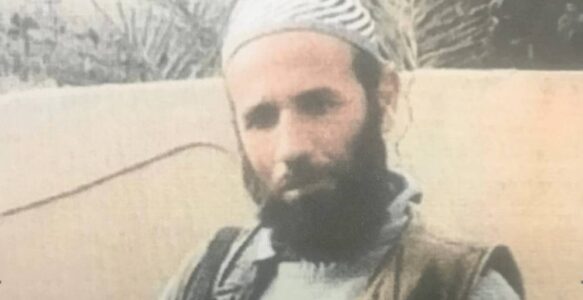
Who will replace the slain leaders of the Islamic State terrorist group?
In one week, the Islamic State (ISIS) suffered two major losses in Iraq. One was the assassination off Abu Yasser al-Issawi, the overall commander of the terror organization in Iraq, who was killed near Kirkuk on 29 January, followed by Abu Hasan al-Ghreibawi, the wali (governor) of ISIS for southern Iraq, killed on 3 February. Both were responsible for the latest ISIS rebound, culminating in the twin suicide bombing in Baghdad last month that killed 32 people.
The back-to-back assassinations leave the self-proclaimed caliph, Abu Ibrahim al-Qurayshi, with the task of finding successors to both men. Replacing Ghreibawi should not be too difficult for Qurayshi, since there is no shortage of indoctrinated warriors within ISIS ranks.
One option might be Abdullah Mekki al-Rafei (Abu Khadijah), the former wali of Diyala and current head of military operations in Kirkuk. Al-Rafei hails from village of Rafeyat, seventy kilometers north of Baghdad, and he is currently based in or around Al-Hawija, west of Kirkuk.
The real challenge is finding a replacement for Issawi, who comes second-in-line after the Caliph. Qurayshi is not just filling an administrative role in this case; he is selecting his replacement, a man who ought to be eligible to become caliph should the current one be killed, toppled, or incapacitated.
Qurayshi was not parachuted into the job, after all. He had been groomed by the former leader, Abu Bakr al-Baghdadi and named as military head of the organization in August 2019, three months before Baghdadi’s death.
Since then, the new caliph, also known as Abdullah Qardash, has reportedly been squeezing Syrian figures out of ISIS’s top command and replacing them with Iraqi nationals. His inner circle is composed of five jihadists, not one of them Syrian.
This is a far cry from the core group that founded ISIS, which included a colorful assortment of Syrian, Iraqi, Kuwait, and Saudi nationals. Qurayshi started to revamp the organization, trying to prevent any non-Iraqi from rising up the hierarchical ladder, so that no “foreigner” ever assume control of the organization.
There is a long checklist that Qurayshi will go through when choosing who to appoint Issawi’s successor. He has to be military commander, drilled in guerrilla warfare, preferably a former member of Saddam Hussein’s army, given that those fighters proved exceptionally effective in ISIS’s terrorist operations since 2014.
Qurayshi has another requirement, however, which is even more important a consideration than military skill. Potential candidates have to trace their lineage back to the Prophet Mohammad via the Quraysh tribe, an old stipulation in Sunni Islam for the office of the Caliph.
Baghdadi claimed lineage from the prophet’s grandson and also famously signed all his communiques as “Abu Bakr al-Baghdadi al-Qurayshi al-Husayni,” stressing this affiliation that gave him legitimacy by the traditional rules governing the Prophet’s successors.
And this consideration explains why the current caliph, whose real name is Amir Mohammad Said Abdulrahman, goes by the name of “Abu Ibrahim al-Qurayshi.” To Westerners, this is nothing but a minor detail, but to pious Sunni Muslims, even those not affiliated to the terror organization, it is vital for determining who the Caliph will be.
Jihadi watchers and other analysts offer a wide array of options when it comes to identifying ISIS’s leaders-in-waiting, including names like Ahmad Issa al-Rawi (Abu Talha al-Shayeb) and Moutaz Nouman al-Jabbouri (Hajj Tayseer).
The first is the former wali of Baghdad, while the second is a prominent explosives expert who was close to Baghdadi. Both of these men are still on the US’s list of wanted terrorists, with bounties on their heads. The problem is: both have been killed over the past year either by the Iraqi Army or by the United States.
A more accurate, yet much shorter list, based on the names of the senior Iraqi figures who remain active in the Iraqi insurgent underground, would include the following:
Abu Hamzah al-Qurayshi, the official spokesman for ISIS. We know nothing about him, apart from what his name implies, that he is an Iraqi who hails from the Quraysh tribe. We also know that assumed his job after the killing of his Syrian predecessor, Abu Mohammad al-Adnani. He is the man who announced Abu Bakr al-Baghdadi’s death to the world on 26 October 2019.
Another candidate is Walid Jassem al-Alwani (Abu Ahmad), a former commander of ISIS’s military council and ex-officer under Saddam. Alwani should be regarded as a doubtful prospect, though. He is close to the Caliph, and might well take over command of the Iraqi front from the late Issawi, but Alwani lacks the credentials to be the successor.
Next we have Bashar Khattab al-Sumaidai (Hajji Zaid), the current head of the ISIS judiciary. His tribe, the Sumaidai, is concentrated northwest of Ramadi and traces its ancestry to Imam Ali, the fourth righteous caliph and son-in-law of the Prophet Mohammad, making him a perfect candidate to be Caliph. He is high on the list of wanted terrorists by the Iraqi Army.
Finally, there is Sami Jassem Mohammad al-Jabbouri (Hajj Hamid), the former ISIS finance minister from 2014 to 2019, was in-charge of illicit trafficking in oil, weapons, and human beings, and the one-time ISIS representative in Mosul. He is currently part of the new Caliph’s inner circle.
In 2016, the Kurds claimed to have killed Jabbouri, which proved incorrect. Last September, it was also reported that he had been killed by the Syrian opposition in Idlib, which also proved to be untrue.
Source: European Eye of Radicalization





